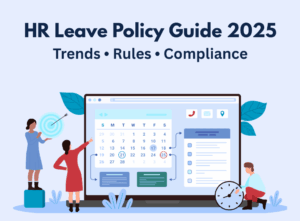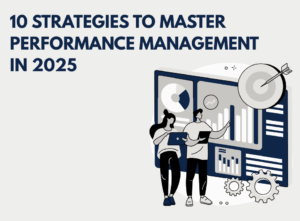How To Retain Your Best Employees – techniques and strategies
“The way your employees feel is the way your customers will feel. And if your employees don’t feel valued, neither will your customers.”
This line best sums up the vital role the employees play in any organization. Everyone knows that the best assets of any organization are its employees.
They are the ones who can make or break your organization potentially as a collective. Whenever your best employees leave, irrespective of their reason to leave, you let go of a little business with them.
So it is crucial to formulate some good employee retention techniques and strategies as guiding-posts for your company.
All growing organizations around the world consider employee retention a major strategic imperative. The retention process critically impacts the long-term success and profit of the organization.
On average, the cost incurred in hiring and training the replacement is equivalent to six to nine months of a mid-level employee’s salary.
If it is a managerial position, it can go even higher. And if you are looking for senior positions, you would need the assistance of head-hunters to get the right candidate. And this whole exercise would prove to be an even costlier affair.
So, what do you do?
It makes sense to create and invest in an employee retention plan that guarantees your best employees sticking to the organization and helping you thrive long-term.
If your idea of making employees stay is a fat paycheck, you might be mistaken as there is a lot more that makes employees stay.
Here are some quick tips that will bring to ensure that your employee retention rate only climbs higher and higher.
Communication Conducive Environment
The foremost tool for employee engagement is an encouraging environment that thrives on open communication.
The new workplace environment does not flourish on authority and power, but on honesty, trust, and collaborations.
Employees are engaged and mindful of the company’s mission when they feel themselves to be an integral part of the organization. And an open communication ensures that.
Keeping them in a loop in terms of what is happening and how is the company evolving, makes the employees feel visible which can go a long way in retaining them.
The environment for clear communication can be created by providing the employees with efficient communication channels that can be utilized for both formal group discussions and casual conversations.
Another way to implement transparency in the workplace is to have a well-defined framework in place. It must outlines everything right from what is expected from each employee, their area of expertise, the performance evaluation parameters, and the rules and regulations they need to follow.
Once the employees are clear in terms of the expectations from the management, they are fewer chances of a misunderstanding of goals, employee burnout, or excess workload.
Two-way Feedback
Employee appreciation is something that has been greatly undervalued. Money is not end-all for everyone.
Even if your best employee is getting a fat paycheck, a lack of appreciation might bring down her morale.
When employees don’t feel acknowledged and appreciated for their efforts, they might start to lose their interest in their work which can lead to less productivity and a hunt for better opportunities.
Recognition is an extremely important employee engagement and retention tool, and it can range from simple congratulatory emails to incentives on completing certain targets.
The charms of corrective feedback cannot be ignored too as employees love to know how they can improve their performances.
The only catch is it should be constructive and not come off as condescending or harsh.
Since it is a two-way street, ensure that employees have efficient communication channels to give their feedback on company practices too.
Whether it is through anonymous employee surveys or direct feedback sessions, the organization should have a system in place that allows the employees to give honest feedback about the changes that they want to see in their workplace.
Stay interviews are not a popular trend yet but they give great insights into what makes an employee stay in spite of other lucrative offers.
Inculcate Leadership
It is often said that the employees leave not because of their jobs but because of their managers. Since it is the managers with whom we work the most, it is important to have a manager that understands the employees.
This can be done only when there is quality leadership at the helm. While a manager only supervises your work, a leader inspires the employees to give their best at work.
From having a friendly equation with the employees to being an empathetic listener who is always ready to lend an ear to his employees, the leader does things quite differently from a manager.
A manager may try to micro-manage the employees under her while a leader gives the employees the liberty to work in their own way to get the results.
This results in the employees being stress-free and more productive, which is a win-win situation for everyone involved.
An intuitive leader at the top of the things knows what exactly her team needs, whether it is a flexible work schedule or an incentive program, to bring out the best in them.
With her ‘let’s do this’ attitude instead of a manager’s ‘you do this’, there is a tectonic shift in how the employees step up to take initiative and ownership of their work.
Regular training programs to groom your managers into the leaders of the future are the need of the hour that will translate into lower attrition rates and better work culture in the long run.
Say Yes To Innovation & Creativity
Any job that is done on a regular basis will become boring after some period of time and this is true for workplaces too.
As an employee gains more experience over time, her speed and accuracy increase significantly and what was once challenging in her job profile now becomes a run of the mill task.
But many times, the workplace might not be equipped to match pace with the employee’s zeal and speed of learning.
The company needs to keep employees interested in their work by giving them increasingly challenging tasks to avoid employment monotony. This implies building a dynamic work environment that encourages out-of-the-box thinking and is open to innovative ideas.
Tap into the wisdom of your experienced employees and ask how they would like to contribute further to the organization. From brainstorming sessions to role-storming and star-bursting, the work environment should embolden risk-takers and innovative thinkers without the fear of rebuttals due to failures. Failures are inevitable when you are experimenting with new ideas but the leadership should show constant support for ingenuity.
It is crucial to provide employees a space to express their creativity. As doing so will boost your business and strengthen your relationship with your staff.
Employee Growth and Development
Employees’ personal growth and career opportunities inside the company are significant factors when determining whether to stay or go. To stay relevant in the job market, it is imperative for the employees to constantly improve and upgrade their skill-sets.
Organizations that facilitate employees’ personal development and growth have a loyal employee base with a lower employee turnover rate.
With online learning tools, organizations can easily encourage their employees to learn new skill sets for their personal growth. Organizations can also incorporate a Learning Management System that includes features like videos, micro-learning, multiplatform accessibility, personalized learning paths. They can help to provide quality training that aligns with the business goals of the organizations.
Many companies encourage their employees to pursue higher education and provide full support to them. They provide tuition fees, paid study leaves before examinations and flexible working hours to help them in managing their classes.
Many organizations also have in-house libraries and resource centers that employees can utilize in their spare time for personal growth.
Conclusions
These small steps will make your employees feel valued by the organization.
If you expect a long-term relationship with your employees, showing that the organization cares about them and does not consider them as just the means to an end will ensure that you have loyal employees on board who are as invested in the organization as you are.


